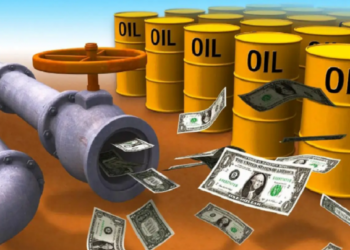Oil re-entered a bear market on Tuesday extending the previous day’s losses, when Brent crude — the international benchmark — recorded its biggest one-day sell-off since February.
After dropping more than 6 per cent on Monday, Brent fell a further 2 per cent in the next trading session to $55.40 a barrel. It is down more than a fifth from its year-high of $69.63 a barrel reached during intraday trading in May.
When prices fall by 20 per cent from their peak, this is commonly defined as a bear market. The renewed sell-off comes a year after the oil market started its descent from above the $100 a barrel level it had averaged for most of this decade.
There are six reasons Brent and US crude oil futures are falling again, according to the FT.
Iran nuclear deal
Expectations that western powers will strike a nuclear deal with Iran in the coming days has refocused the market on the return of additional exports of Iranian barrels, which have been sharply curbed by sanctions in recent years. While the timeline for lifting sanctions remains unclear, it is estimated that Iran could add up to 800,000 barrels a day to the market within a year.
“We are getting closer to the Iranian deal . . . and we think that the surprise could come from the timing of the lifting of the sanctions,” says Olivier Jakob at Petromatrix.
China slowdown
China has been the centre of global oil demand growth over the past decade, rising from a bit-part player in the market to overtake the US as the largest importer of crude and refined products in the world. So when China’s economy wobbles, the oil market is quick to respond. Moves by China’s central bank to shore up the economy, including cutting rates and lowering reserves banks must hold, have been interpreted by many oil traders as a sign that growth in the Middle Kingdom is even worse than first feared.
Greek turmoil
Greece’s decision to reject the bailout package is unlikely to have a significant immediate effect on oil demand. But it has sparked a bout of risk aversion across markets and led to a strengthening in the US dollar. Commodities like oil that are priced in dollars tend to move inversely to the US currency.
“The evolving situation in Greece will be a factor on all markets for the foreseeable future,” said Dominick Chirichella at the Energy Management Institute in New York.
US shale resilience
The resilience of US shale oil production has impressed many traders. While last year’s near halving in US prices from above $100 a barrel to closer to $50 today has seen growth in the sector stall, so far production has held up in most of the major shale plays.
Swelling OPEC supplies
Opec’s oil production has also been on the rise, hitting a three-year high in June with output from Saudi Arabia and Iraq close to the highest level on record.
Hedge funds cut long positions
The rebound in Brent prices from a six-year low of $45 a barrel in January to $69 in early May was stoked, in part, by near-record hedge fund buying as speculators bet low oil prices would quickly crimp supplies. By May hedge funds were holding futures and options positions equivalent to almost 289m barrels of oil on the Intercontinental Exchange. But since then hedge funds have cut their so-called net long position — the difference between bets on rising and falling prices — by roughly a third to less than 200m barrels.


















